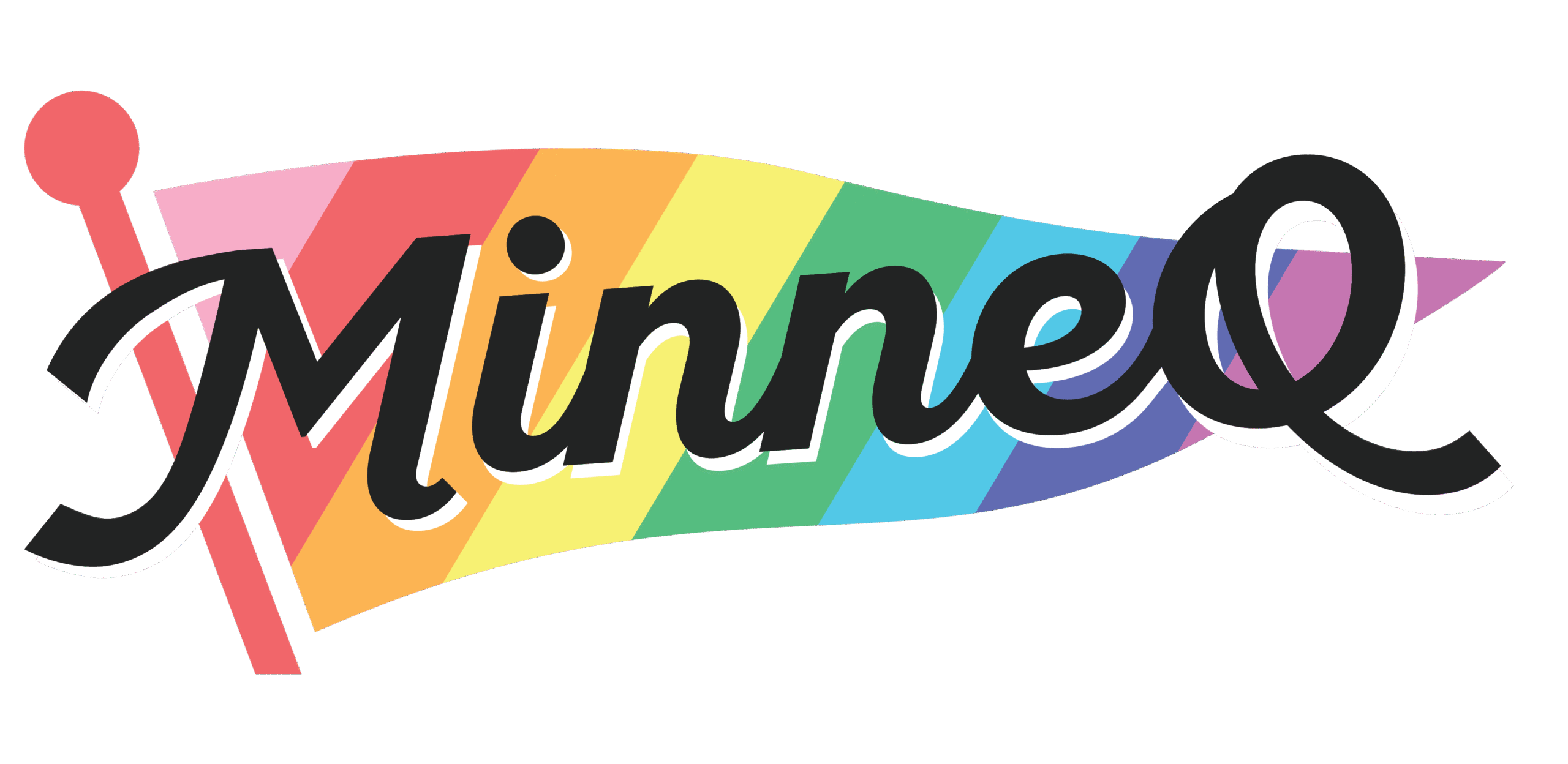Labels are sometimes helpful, sometimes not. Sometimes people create new labels because the existing ones don’t quite work. Whether your identity can be easily labeled or not, your identity is valid.
Let’s start with the basics.
Sex vs. Gender
Sex: a label that was assigned to you at birth by a doctor based on the genitals you’re born with and the chromosomes you have.
Sex is usually defined on the binary of female and male, though some places, including Minnesota, have started to include “X” as a non-binary marker for legal documents.
Sex may be described as “biological sex”, but that does not provide an accurate representation because sex has never been binary. Many have opted to use the phrase “assigned female/male at birth” This acknowledges that someone (often a doctor) is making a decision for someone else.
Gender: a social and legal status, and set of expectations from society, about behaviors, characteristics, and thoughts. Each culture has standards about the way that people should behave based on their gender.
Female/male vs. Woman/Man
It’s important to take care to know when it’s appropriate to use female vs woman. Here’s a simple rule:
- If referring to sex, or to animals outside of humans, use female and male.
- If referring to gender, use woman and man.
Intersex: refers to a variation in sex characteristics that does not fit typical definitions of male or female. Intersex individuals may have a combination of male and female traits, or they may have traits that do not fall neatly into either category. It is important to note that intersex is not a gender identity, but rather a biological condition. However, some individuals still find this to be an important piece of their gender identity.
In a society that demands a gender binary, intersex infants pose a “problem” that “must be fixed”. As infants and young children, these individuals undergo unnecessary and potentially dangerous surgeries to be able to present “normally”. And, because of the age at which these surgeries take place, these individuals do not get to participate in the decision regarding their own body.
The fights and demands of transgender and intersex individuals are, at their root, the same: the fight for bodily autonomy. [“I want to be like nature made me”] [Human Rights Watch] [Yale Law & Policy Review]
[Planned Parenthood Sex and Gender Identity]
Gender Identity
Trans: a Latin prefix, meaning “across,” “beyond,” or “on the other side of”. When used with regards to gender, some use it as a prefix (i.e. transwoman), but some will use it by itself (“I am trans”).
Cis: a Latin prefix, meaning “on this side of” or “on the same side as”. Cisgender individuals gender identity aligns with their sex assigned at birth.
Non-binary: a term used to describe gender identities that don’t fall into the traditional categories of woman and man.
Some non-binary individuals also identify themselves as trans, following the reasoning that, if they are not the same gender assigned at birth, then they must be trans. Other non-binary individuals consider gender a spectrum for which they fall no where, therefore “non-binary”. Both of these opinions are equally valid, as are any that are not listed here.
Genderqueer: a person whose gender identity cannot be categorized as solely woman or man.
Genderfluid: a person who does not have a fixed gender identity. Instead, their gender is flexible and may shift and change across days, months, or hours.
Two-Spirit: an Indigenous person who embodies both masculine and feminine qualities, often encompassing a spiritual and gender identity outside the binary.
Agender: a person who has an internal sense of being neither man nor woman nor some combination of the two.
Bigender: a person who experiences two distinct gender identities, either simultaneously or at different times. This means they may identify with both woman and man, or with any other combination of two genders
Fem: adjective to mean feminine or liking to present with feminine traits.
Masc: adjective to mean masculine or liking to present with masculine traits.
Androgynous: to be without a gendered appearance.
Romantic and/or Sexual Orientations
Lesbian: a woman attracted to women.
Gynesexual: attraction towards femininity. Heterosexual men and bisexual women are included here.
Sapphic: a woman attracted to women, but not exclusively (can also be bi/pan/queer).
Gay: a man attracted to men.
Androsexual: attraction towards masculinity. Heterosexual women and bisexual men are included here.
Achillean: a man attracted to man, but not exclusively (can also be bi/pan/queer).
Bisexual: sexual attraction to two genders.
Pansexual: sexual attraction to all genders.
Ceterosexual/skoliosexual: attraction towards non-binary/androgyny.
Queer: a catch-all term for gender identity, romantic and sexual orientations that do not fit traditional cisgender heteronormative roles.
Straight: attraction towards the opposite gender.
Fluctuating/evolving: term for individuals who are unsure of/questioning their orientation.
Demisexual: a sexual orientation in which a person feels sexually attracted to someone only after they’ve developed a close emotional bond with them.
Asexual: an absence of sexual attraction.
It is a common myth that asexual individuals do not have a libido or enjoy sexual activity. Some do, others don’t, and both are normal!
Aromantic: having little or no romantic feeling towards others.
Aroace: an individual who identifies as both asexual and aromantic.
